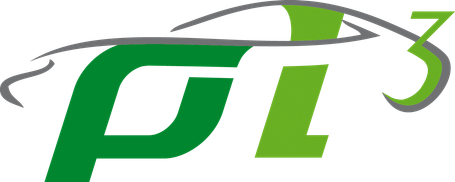New Mobility – are central control unit and software the egg of Columbus?
The current megatrends in the automotive industry today are electro-mobility and autonomous driving. Without a doubt, Tesla is a pioneer in both areas and has contributed to great dynamic in the entire industry, similar to how Toyota succeeded in the field of powertrain technology and electrification with the introduction of the Prius.
These innovations would not be possible without electronic controls. Software and electronics are essential components of such systems. Or rather the centerpiece in the future. Electronic commutation for the electric drive or assistance systems up to autonomous driving, without computing power and software, this can never be achieved.
In this context, there is a passionate discussion of what Tesla does differently from the established automobile manufacturers. As an example, I would like to quote two articles (in German) or their headings from February 2020: “Tesla is six years ahead” and “Why Tesla is not six years ahead”. In essence, there are three statements that I would like to focus on here:
1. The approach with a central control unit is superior
2. The differentiating factor is exclusively the software
3. Automobile manufacturers will only be successful with their own added value, i.e. fewer partners / suppliers
In my opinion, the approach of a central control unit needs to be viewed in a more differentiated manner. Sure, with one control unit and the right safety concept, I only have one software and all state variables can be used for all program parts. In the beginning I am faster, because with the right computing power and memory size, I can implement functionalities quickly and efficiently. And I have a very high communication speed, so there is no need to communicate with other control units.
However, there were also common control units for combustion engines and transmissions in the past, but these did not catch on. Incidentally, the vehicle manufacturers were also developers and producers of combustion engines and transmissions here.
From my point of view, a clear architecture and the consistent definition of areas for certain, definable functionalities are much more important. This, together with a clear and detailed understanding of the sytem to be controlled, is, in my opinion, the key to high-performance and maintenance-friendly software. In particular, the separation, analogous to products and software in the consumer area, is important: the operating system, application software, application software and data is essential for sustainable success.
Is software the only thing that differentiates? Not from my point of view. Although I know of indications that a product with one software was successful on the market and the identical product with another software unfortunately failed. But was that just due to the software? Just not. On the one hand, it is a question of knowing the controlled system and, on the other hand, the correct algorithms in the software to achieve the optimum.
The quality and robustness of the components is just as important as their ability to perform the required functions. Let's take the topic of range in electro-mobility. The software has a significant influence on control and has a significant influence on range and efficiency. But the hardware components used and the layout, including wiring lengths and wiring resistances, represent physical limits that the software cannot overcome. The same applies to autonomous driving with regard to sensors and camera systems. The software cannot change the resolution and sensitivities with regard to the environment and interference. Software alone does not drive a car. Yet without no car will drive.
Does the saying "Many cooks spoil the broth" apply to the implementation of megatrends as suggested in the third point? Do vehicle manufacturers have to increase the added value share in order to be successful? No, in my eyes that leads to a dead end. In order to develop a new technology, one prefers to use one's own resources or a very small group of handpicked partners. Like Toyota with the Prius and also Tesla, to take up the examples mentioned at the beginning.
For the next generations, however, it is important to involve external partners and service providers in order to benefit from their skills, specialist knowledge and innovations. If a pioneer was successful with its products, competitors will endeavor to offer corresponding technologies as well and to use partners and service providers for this purpose. This results in optimizations of the original product and possibly competing approaches in a greater dynamic than will be the case in a single company.
In my opinion, success factors are the simultaneous development of hardware and software and the consistent and precise virtual description of the hardware as the basis for software development. If I have to build something in the real world first in order to have a basis for software development, I'll be too slow. Hardware and software of a design stage or of prototypes have to be finished practically at the same time and function together immediately. It is of course more difficult to guarantee this with several partners and in customer-supplier relationships there are often barriers to data exchange with regard to the protection of intellectual property.
It is therefore important to build bridges between vehicle manufacturers, suppliers and service providers on the one hand and between the disciplines of hardware, software, systems and simulation. For electrifying mobility also in future.
